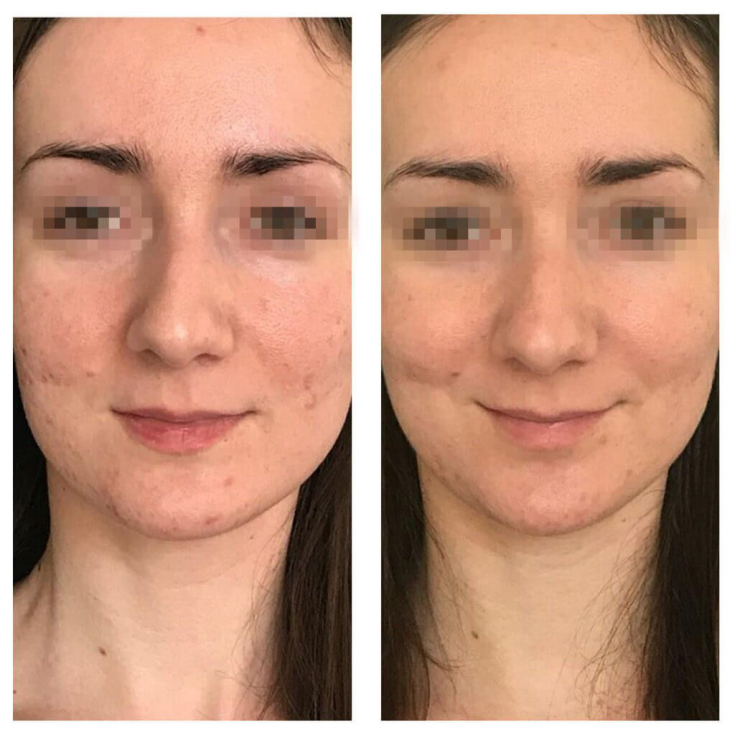More and more people are looking for non-invasive procedures to solve aesthetic and dermatological problems. Phototherapy refers to this procedure, its action consists in the action of non-thermal light on the skin and can be used in various light-emitting devices. Interest in recent advances in the use of light emitting diodes (LEDs) has led to their clinical applications for various medical and cosmetic applications.
The article on estet-portal.com describes the mechanisms of action of phototherapy and its therapeutic effect in the context of dermatological problems.
- Phototherapy in acne treatment
- Phototherapy and wound healing
- Psoriasis treatment with phototherapy
- Conclusion
Phototherapy in the treatment of acne
Propionibacterium acnes (P. acnes) is a Gram-positive bacterium involved in the pathogenesis of acne. In vitro studies have shown that blue light has an effect on P. acnes as it produces the strongest photoactivation of endogenous porphyrins in the process. The result is the formation of free radicals and destruction of the P. acnes cell membrane. An open clinical trial evaluated the safety and efficacy of blue light on inflammatory and non-inflammatory lesions in patients with mild to moderate acne. Patients have not received topical or systemic treatment for two weeks and have not received oral retinoids for six months.
Read also: Acne treatment: new opportunities.
Initial lesions were counted and reported by type of lesion. Subjects received eight 10- or 20-minute sessions using LEDs with peak wavelengths from 409 to 419 nm (40 mW/cm2) over a four-week period. A beneficial effect on inflammatory lesions was observed at week 5, becoming significant at weeks 8 and 12. The average percentage reduction in the number of lesions at each time point was 25%, 53% & nbsp; and 60%, respectively; however, there was little effect on non-inflammatory lesions. Side effects included mild and transient erythema, dry skin and itching.

Because it has been demonstrated that combined blue and red light phototherapy can achieve even greater efficacy in the treatment of acne, an open study was conducted to evaluate the effectiveness of combining blue light 415nm and red light 633nm in the treatment of mild patients.Registered subjects with Fitzpatrick skin types II – V had not received oral or topical acne treatment in the six weeks prior to trial or oral retinoid use in the previous nine months. Patients with photosensitivity disorder were excluded. Each patient received two treatments per week three days apart, alternating between 415 nm blue light (20 minutes/session, 48 J/cm2) and 633 nm red light (20 minutes/session, 96 J/cm2) for four weeks using LED therapy. Acne severity was assessed at baseline and at 2, 4, 8, and 12 weeks. Among evaluable patients, mean reduction in lesions was seen at each subsequent evaluation.
At a four-week follow-up, the average number of lesions was reduced by 46 percent and 81 percent at 12 weeks of follow-up.
Severe acne showed a marginally better response than mild acne, although comedones did not respond as well as inflammatory lesions. This is common in light therapy research because non-inflammatory acne lesions have fewer chromophores (coproporphyrin III and protoporphyrin IX).
Phototherapy and wound healing
In-vitro pre-clinical studies and early clinical studies have demonstrated that LEDs developed by the National Aeronautics and Space Administration (NASA) have a beneficial effect on wound healing.
Read also: Light therapy for atopic dermatitis.
Based on these reports, the following controlled pilot study was conducted to determine whether phototherapy can actually improve wound healing after surgical aesthetic and reconstructive procedures.
Men and women with a mean age of 52.3 years (range 44-59 years) underwent combined blepharoplasty and Er:YAG/CO2 laser ablative resurfacing. Subsequently, half of the face of each patient was randomly selected and treated with a 633nm (96J/cm2) red LED for 20 minutes immediately after surgery, 48 hours after surgery, and two more times the following week.
The side treated with LEDs healed after 13 days vs. 26 days for the raw side.
Patients were evaluated 24 and 48 hours after surgery, 7 and 10 days, and 2, 3, and 6 weeks. Resolution of erythema, edema, bruising and days to healing was assessed by digital photography and commented on independent plastic surgeon.
Psoriasis treatment with phototherapy
As more attention is paid to visible red (633nm) and near infrared (830nm) light, the following pilot study was designed to evaluate the effectiveness of combining 830nm and 633nm LED phototherapy for the treatment of recurrent psoriasis. All patients had chronic plaque psoriasis and guttate psoriasis lasting up to 35 years, affecting 15 to 80% of their body area. Most of the patients were resistant to conventional treatments.
Read also: Modern methods of psoriasis treatment.
Each patient was treated sequentially with 830 nm, 60 J/cm2 and 633 nm, 126 J/cm2 continuous wave LED arrays in two weekly 20-minute sessions for 4 to 5 weeks with two days between sessions. Said psoriatic plaques or grooved papules were chosen as the elements for treatment. Overall patient satisfaction was very high. Protoporphyrin present in psoriatic skin appears to act as a photosensitizer.
Conclusion
LED phototherapy is a valuable tool in the arsenal of dermatologists. It can be used alone or in combination with other therapies to treat a wide range of dermatological conditions. In addition, this technology has many aesthetic applications, both as a stand-alone treatment and as an adjunct to other aesthetic procedures, including routine procedures such as injections, laser resurfacing, and peels. There is no other technology available to the practicing dermatologist that could have such wide application across the spectrum of medical and aesthetic applications.







Add a comment